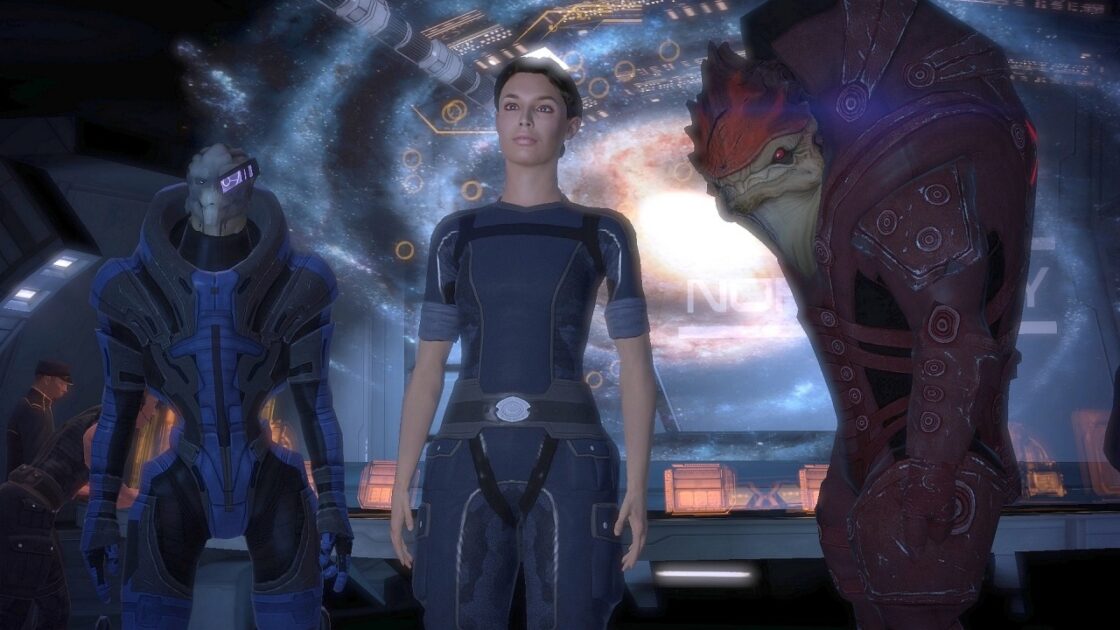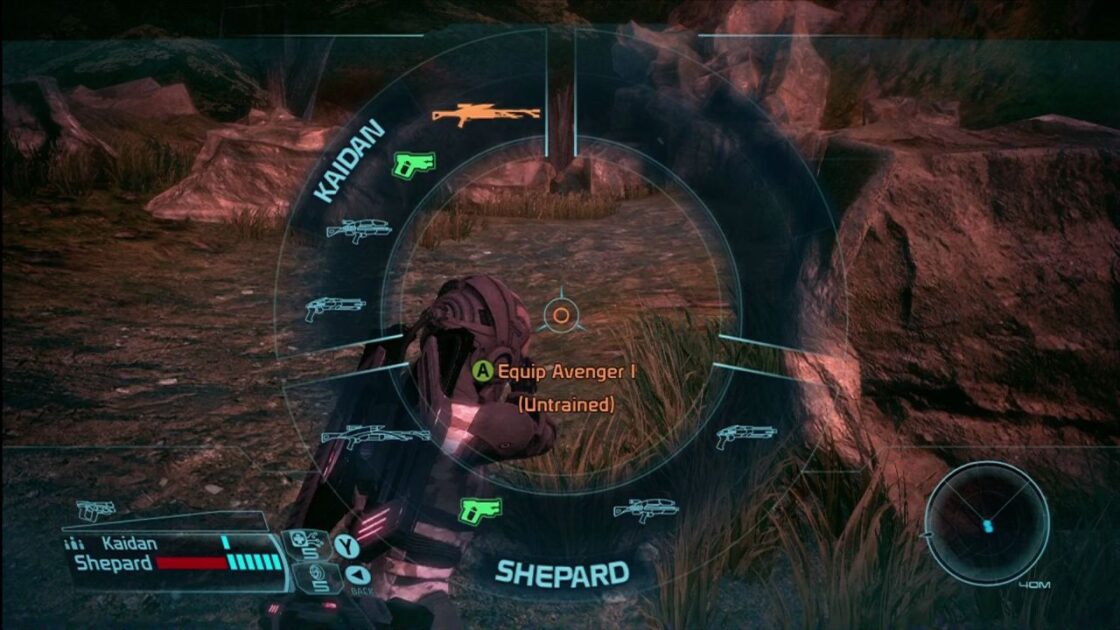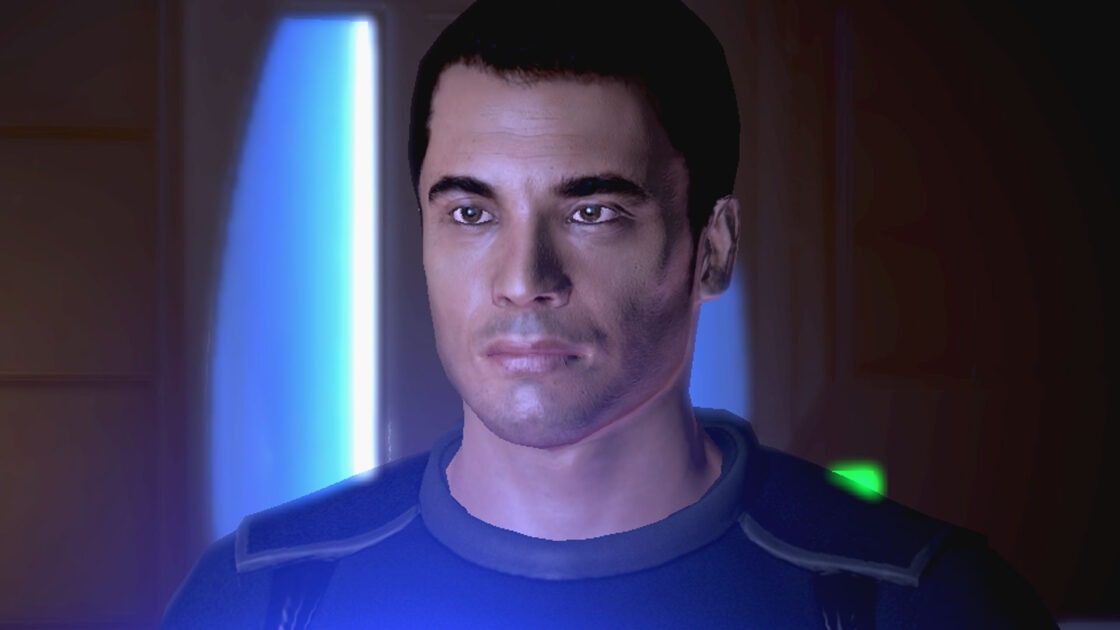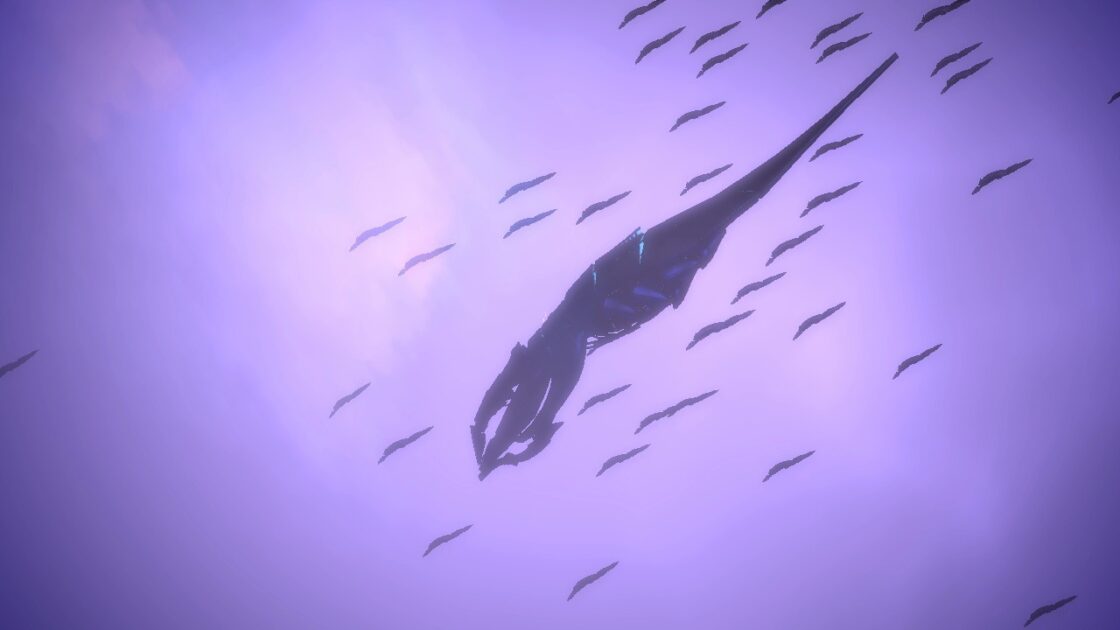Mass Effect
Reading time: 6 minutesWarning: Spoilers off the starboard bow, Cap’n.
With all the hype and notable disappointment surrounding the recent release of Mass Effect: Andromeda, I thought I’d pop back and visit one of my favourite gaming trilogies of all time. I was in my mid-teens when I first played Mass Effects one through three. I had my fourth Xbox 360 (god damn you, Red Ring of Death) hooked up to a TV that was far too big for my bedroom at the time, connected with nothing but an AV cable and prayers that everything would continue to work. By the time Mass Effect 3 came out, I had definitely gotten through at least one more Xbox 360.

I picked up the Steam version of Mass Effect 1 this time around, my latest Xbox 360 having died many moons ago. After spending a good hour trying to get the sound working (it’s an old game and, I warn you now, an abysmal port), and a further hour modding in Xbox controls for a game that was designed to be played on a console, I finally got around to playing Mass Effect in glorious 1080p and 60fps. Teenage me would have been giddy with excitement.
It says a lot about how far gaming has come really, for a game originally meant to be played on a dedicated console to now be running on a laptop in my living room. Beyond anything else I felt about returning to this fantastic title, the fact that I was playing it on a portable device (the lower-end HP Omen 2016, for anyone wondering) absolutely blew me away. Along with being able to use headphones to actually hear the game’s sound (instead of through tinny TV speakers over the jet engine noises of the Xbox 360), it was wonderful to see the game painted in a refreshing light.
Having experienced the latter two in the series, it was a bit strange going back to Mass Effect 1, even after many years of not playing any of them. In terms of controls and user interface, Mass Effect has not aged well – in fact, my memory is telling me that little teenage me wasn’t overly enamoured by these design elements at the time of release. The controls are still clunky and awkward, particularly in using and selecting biotic power-ups (I was playing full biotic with this iteration of Shepard, as I know this area improves drastically in Mass Effect 2). The UI, an ungodly shade of blue with orange highlights, is a ridiculous mishmash of large buttons and an inventory that’s a chore to go through at the best of times.

For the last two missions, I had an annoying pop up stating that I was nearly at the 150-item inventory cap and needed to clear some space – but, no matter how much space I made, one item at a frickin’ time, I never got below the 140 item mark. I eventually just stopped picking stuff up – my midgame armour and weapons were more than good enough.
But gameplay is an area that I know the Mass Effect series has improved on – in fact, it’s one of the only areas that has received universal praise for being fun in Mass Effect: Andromeda – and I expected to come across the regular level design flaws and oddly nauseating shaky-cam when running without a weapon equipped. I wouldn’t say the effect was lessened by having played it before, but it certainly helped to know the workarounds to some of the more frustrating aspects of the game’s design. But gunplay, which is probably given as much time as character-building dialogue, still felt fun and tense and engaging – even if it does feel, at times, like a baby trying to take its first steps whilst an awful person in a suit shouts at it to hurry the hell up already, time’s money.
I’m looking at you, EA.
But the UI and the inventory and the gunplay are not the things that stick in my nostalgia for Mass Effect. The pinnacle of the series has always been its characters. Do note that I didn’t say “its writing” – the two are very, very different things in this game.
I fell in love with the characters in Mass Effect, and their backstories and progression are still some of my favourite in video gaming history. Liara T’Soni is a nerdy and bookish archaeologist, who just so happens to have a flair for guns and magic (sorry, “biotics”) on the side. She’s also blue. And has head prongs. And may or may not be neither male nor female. Her conversations are delightfully awkward at first – being a non-human character, she struggles to say the right thing because of the differences in cultures between the races. She gets excited at the discovery of new things throughout the plot, to the point that it regularly sends her off to the hospital wing in a sudden onset of faintness.
Kaiden (my video game love for life) Alenko is a gloriously, subtly kind and generous person with a plethora of backstory and conversations and oh my goodness he’s amazing. His input after missions (entirely optional, of course) is reflective, and can often have you thinking differently about the tasks you’ve just undertaken, questioning whether your actions were right, and what kind of impact they’ll have on the future.

These are just two of the main characters who are interesting and engaging (and the two that I focused on in my playthrough this time around). Bioware have always been experts at eliciting emotional responses from us through their characters – more than anything, that’s been their gift to gaming. And while the later games in the series do it with perhaps a touch more refinement, Mass Effect sets a high bar for characters in video gaming. Very few games, for example, could hold the interest of the average player during a seriously long conversation with an overlarge, space dinosaur.
There are, of course, times when the writing falls flat on its face, though almost always at the expense of the seriousness of the plot, rather than the characters themselves. There was a particularly memorable moment, for me, at the very end of the game: Captain Anderson (whose name I will never not pronounce in my head in the Alan Rickman-like drawl of Chancellor Udina) stands up and gives a morale-boosting, pre-war speech. Unfortunately, only three aliens are listening, and those three just so happen to be only around a foot away from him as he shouts about the future glory of the human race. I had to stifle many a laugh as the camera cut back to the vaguely blank expressions on the aliens’ faces as they watched a grown man, and military commander, give a rousing speech to no one.
Even the overarching storyline of the game appears a little… badly thought out. It feels somewhat like the storyline was designed to be a character piece about a rogue special agent and the actions (sometimes not morally acceptable) taken to stop him. But, at the last minute, someone thought: “I know what this needs! Giant space insects!” and they were shoehorned in in post-production. It’s a good way to set everything up, in the end, but it does feel slightly disjointed. You end up fighting this game’s bad guy three times, because the storyline director couldn’t seem to work out where the game was going to end, and then just left in the bits that any other developer would have cut out.

It’s not a perfect game by any stretch of the imagination. But Mass Effect 1 is the sort of game that holds strong in the heart. What it lacks in some of its more graphical designs (did I mention, by the way, that it still holds up to titles being released today, in terms of animation and graphical capabilities?), it has the soul that comes with a developer that knows how to make characters. That knows how to build them into a vibrant and interesting world, and knows how to make you care for them. Because when it comes to the choice of who lives and dies, it’s always a challenge. Except in the case of Ashley.
Seriously: fuck Ashley.
Perhaps the truest sign of a Mass Effect’s quality is that the points I’m making are no different the points I made when I first played it. Older me has become infinitely more cynical, infinitely more critical, and yet I can find nothing further at fault with Mass Effect than I did when I was a high school student. It’s still fun, it still rouses the emotions, and it’s still a bloody good game.


